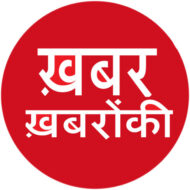
Ira Singh
Khabar Khabaron Ki,26 April’24
The problem of high food inflation will be “less severe” in India going ahead, as modern supply chains with diversified sources can help quickly address sudden spikes in prices of specific food items, RBI Monetary Policy Committee (MPC) member Ashima Goyal said on Thursday.
Stressing that the share of food in the household budget is high in India, Ms. Goyal said policy needs to focus on increasing agricultural productivity, since stable agricultural prices are important for non-inflationary growth.
Goyal further pointed out that one does not hear of tomato or onion prices spiking in advanced economies.”We naturally have diverse geographic regions, better integrated markets sourcing from different regions can help mitigate climate change induced food price spikes,” she said.
Moreover, as the weight of food in consumption falls and food consumption itself becomes more diversified, the impact and size of future food price shocks falls, she noted. Goyal emphasized that under flexible inflation targeting, expectations get better anchored.She cited the example of East Asia, where food prices were allowed to rise and agriculture was subsidized only after food budget shares fell.
India unfortunately opted for a distorting system of subsidies to farmers as well as to consumers,” she said, adding that given India’s huge population this was very expensive and reduced the space for government investment in agriculture.
Besides, Ms. Goyal said it also kept inflation high as procurement prices rose each year.She said agricultural productivity is finally rising supported by a policy reset, along with the availability of new technologies even though further policy adjustment is required, she stressed.
According to official figures, retail inflation declined to a five-month low of 4.85% in March, mainly due to cooling down of food prices. The inflation in the food basket was at 8.52% in March, down from 8.66% in February.
